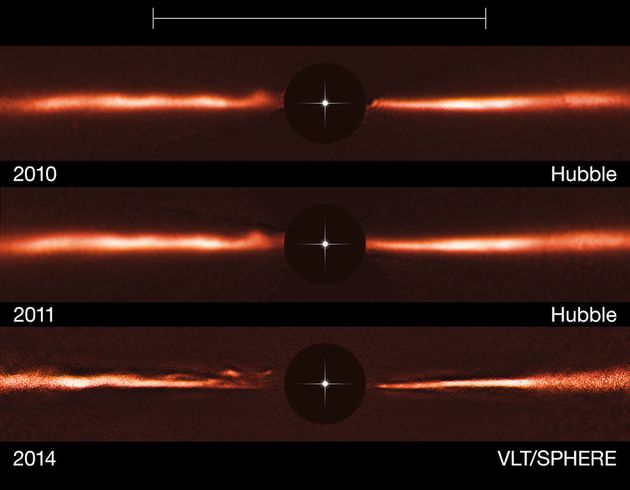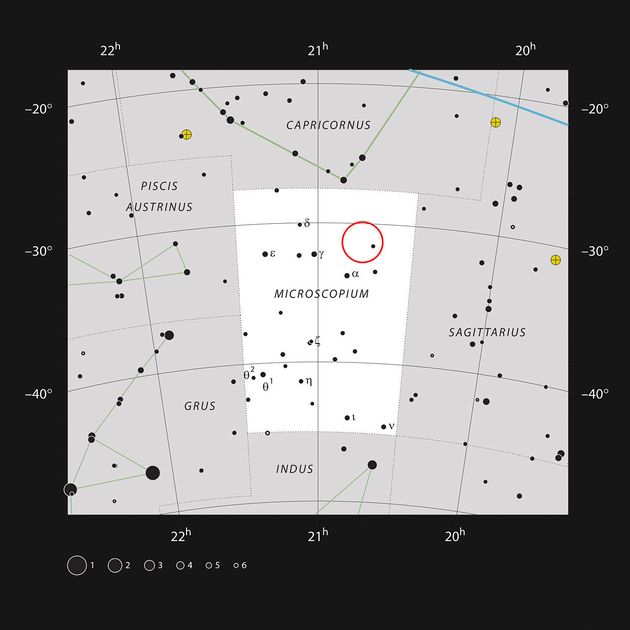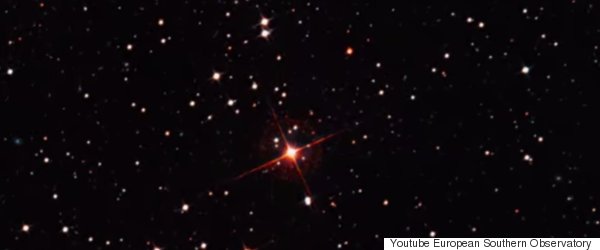Mysterious 'Ripples' Zooming Away From Nearby Star Baffle Scientists
Bizarre, fast-moving "ripples" spotted around a nearby star have scientists scratching their heads. They say the waves are "unlike anything ever seen, or even predicted, before."
Astronomers spotted the strange structures in the surrounding dust cloud of a young star called AU Mic while observing it with the Very Large Telescope (VLT) in Chile. The scientists say five giant, wave-like arches can be seen racing away from the star like "ripples in water."
Anthony Boccaletti, the lead author of a new research paper on the subject, said the finding was very "unexpected."
The images of AU Mic "show a set of unexplained features," Boccaletti said.

By comparing images of the star taken with the Hubble Space Telescope in 2010 and 2011, Boccaletti and his team deduced that the ripples are racing away from the star at a rapid pace.
These waves are said to be moving at speeds of up to 24,855 miles per hour.
"At least three of the features are moving so fast that they could well be escaping from the gravitational attraction of the star," according to a news release.

Since the discovery, researchers have been racking their brains to pinpoint the nature and origin of these strange ripples.
"Everything about this find was pretty surprising," said co-author Carol Grady. "And because nothing like this has been observed or predicted in theory, we can only hypothesize when it comes to what we are seeing and how it came about."
The scientists say the ripples are likely not caused by the collision of two large asteroid-like objects or by instabilities in the star’s gravity.
One possibility is that the arches are linked to AU Mic’s flares. As Business Insider notes, the star "regularly ejects huge bursts of stellar energy from its surface, so it’s possible an especially large flare was powerful enough to push the ripples of dust away from the star and out into the cosmos."
Scientists say the star needs to be observed further before any solid answer can be found.
AU Mic is a red dwarf star that's located 32 light-years from Earth. Scientists have been observing the large disc of dust around the star for signs of possible planets. Studies of such discs "can provide valuable clues about how planets, which form from these discs, are created," said the release.

| 




